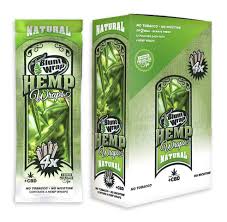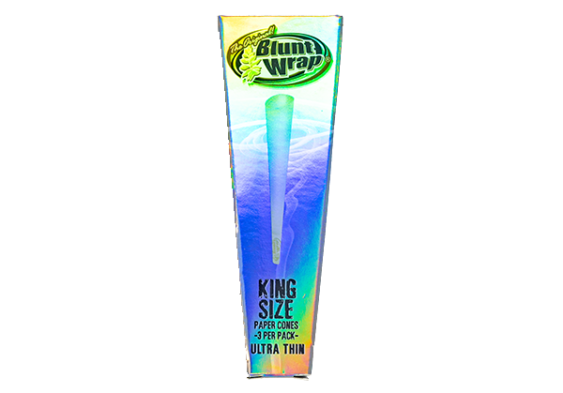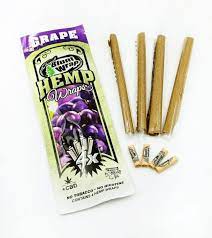How Long Does a Blunt High Last? Exploring the Duration of Cannabis Effects

Ever wonder just how long that chilled-out vibe sticks around after you puff on a blunt? It's a common curiosity among weed smokers, especially when planning your chill sessions or needing to clear your head before getting back to reality.
The duration of a cannabis high can feel like uncharted territory with many variables in play.
A key fact to keep in mind is that the method of consumption dramatically affects how quickly THC hits your system and how long its effects linger. This article aims to break down the different factors influencing the duration of marijuana effects, from smoking flower to indulging in edibles.
We'll guide you through understanding not just "How long does a marijuana high last?" but also how you can potentially extend those sought-after vibes. Stick around; it gets interesting.
Key Takeaways
- The method of consuming cannabis, like smoking or eating edibles, affects how quickly you feel high and how long it lasts. Smoking gets THC into your blood fast, making you feel high in minutes, but with edibles, it can take up to two hours.
- Your body's tolerance and metabolism influence the duration of a weed high. If you use weed often, you might need more to get the same effects because your body gets used to it.
- Other compounds in cannabis like CBD and terpenes also play a role in how long your high lasts. CBD could make your high last longer while terpenes affect the intensity and quality of the high.
- Starting with a low dose is key when trying new cannabis products or strains since everyone's body reacts differently. This helps avoid feeling too high for too long.
- Managing your tolerance by taking breaks from using weed can help keep your experiences strong without needing more cannabis.
Factors that Affect How Long a Weed High Lasts
Understanding how weed high duration is influenced can lead to better consumption decisions and experiences. Various factors such as method of consumption, tolerance and metabolism, endocannabinoid system, dose, and other cannabis compounds all play a role in determining the length of a marijuana high.
Method of consumption
Smoking a blunt or joint gets THC into your system fast. Inhaling weed smoke sends the THC straight to your lungs and then into your bloodstream, making you feel high quickly. The effects of smoking cannabis can kick in within minutes.
On the other hand, eating edibles introduces THC through your digestive system, which takes longer to reach your bloodstream. You might wait anywhere from 30 minutes to 2 hours to feel high from an edible marijuana treat because of this slower process.
Different methods lead to different experiences with how long a marijuana high lasts. Smoking may give you a swift but shorter-lasting buzz, while the duration of edibles high can stretch out much longer due to the slow release of THC into your blood.
It's all about finding what works best for you and adjusting as needed for that perfect length of time for a weed high.
Exploring ways to extend the pleasure means understanding how each method affects duration.
Tolerance and metabolism
Tolerance and metabolism play significant roles in how long a weed high lasts. Tolerance refers to your body's adjustment to repeated cannabis use, leading to reduced effects over time.
Metabolism affects the rate at which THC is broken down and eliminated from your system. Both these factors can impact the duration of marijuana high as well as the amount of cannabis needed to achieve it.
Understanding tolerance and metabolism is crucial for managing your weed experience effectively. By recognizing these influences, you can make informed choices about consumption methods and dosages that align with your individual needs and preferences without compromising safety or enjoyment.
Moving on to - Endocannabinoid System...
Endocannabinoid system
The endocannabinoid system is a network in your body that's responsible for regulating various physiological and cognitive processes. It consists of neurotransmitters, receptors, and enzymes that help maintain internal balance.
When you consume weed, the cannabinoids interact with this system, affecting functions like mood, memory, appetite, and pain sensation. Understanding how the endocannabinoid system works can give insight into why different individuals may have varied experiences with cannabis effects.
This crucial bodily system plays a foundational role in how marijuana affects you and contributes to the diversity of experiences people have when using cannabis products. By targeting the endocannabinoid system with keywords such as "THC absorption" or "length of cannabis high," it's possible to tailor your consumption for a more personalized experience.
Dose
The dosage of cannabis significantly affects how long a weed high lasts. A higher dose usually leads to a longer and more intense high, while a lower dose may result in milder effects.
Finding the right dosage is crucial for controlling the duration and intensity of your high. It's essential to start with a low dose, especially when trying new products or strains, to gauge its potency and avoid overconsumption.
Understanding the appropriate dose for your individual tolerance level can help you manage the duration of your high effectively. Experimenting with different doses and observing their effects on your body will enable you to find the optimal amount that provides an enjoyable experience without prolonging the intoxicating effects unnecessarily.
Properly dosing your cannabis consumption is key to achieving a balanced and satisfying high that aligns with your preferences.
Other cannabis compounds
Other cannabis compounds, such as cannabidiol (CBD) and terpenes, can influence the effects and duration of your high. CBD is known for its calming properties and may counteract some of the psychoactive effects of THC, potentially extending the duration of your high.
Terpenes, which are aromatic oils in cannabis, can also modify how THC interacts with your body, affecting the length and intensity of your high.
These compounds work together to create what's known as the entourage effect - a synergy that enhances the overall impact of cannabis. Through this interaction, different combinations and concentrations of cannabinoids and terpenes can result in varying durations and intensities of highs.
How Long Does It Take for Weed to Kick In?
Weed kicks in within minutes when smoked or dabbed. Edibles, however, can take up to an hour for the high to start.
Smoking flower
Smoking flower is a common way to consume weed. When smoking marijuana, the effects typically kick in within minutes, with peak intoxication reached around 30 minutes after consumption.
The duration of the high can last anywhere from one to three hours, depending on factors like THC potency and individual tolerance levels.
Consuming cannabis through smoking allows for rapid THC absorption into the bloodstream, leading to quick onset and potent psychoactive effects. It's important for users to be mindful of their dosage since smoking flower can deliver a strong and immediate high due to its faster delivery of THC compared to other methods.
Regular smokers may develop higher tolerance levels over time which could impact the duration of their high.
Dabbing concentrates
Dabbing concentrates delivers a rapid high due to the high concentration of THC, which is absorbed quickly into the bloodstream. The effects can be felt almost instantly and usually peak within 10-30 minutes after dabbing, with the high lasting for 1-3 hours.
This method requires a smaller amount of concentrate compared to smoking flower and provides a potent and intense psychoactive experience that may be overwhelming for those with lower tolerance levels.
Moving on to "Eating edibles", let's explore another way cannabis affects your system.
Eating edibles
Eating edibles can lead to a longer-lasting high compared to smoking. The effects may take 30 minutes to 2 hours to kick in, but once they do, they can last for 4-6 hours or even longer.
This is because THC from edibles passes through the digestive system and into the liver before entering the bloodstream, resulting in a slower onset and prolonged duration of psychoactive effects.
It's crucial to be patient when consuming edibles as their potency can vary widely depending on factors such as dose, individual metabolism, and tolerance levels.
Moving on from "Eating edibles", let's delve into "What Does Being High Feel Like?
What Does Being High Feel Like?
Being high feels like experiencing physical and mental effects. The duration of the high is influenced by tolerance, potential risks, and overall feeling.
Physical and mental effects
The psychoactive effects of weed can vary from person to person. Short-term physical effects include increased heart rate, dry mouth, red eyes, impaired motor skills and memory issues.
Mentally, you might experience euphoria or anxiety depending on factors like dosage and individual tolerance levels. Prolonged use may lead to addiction and other mental health concerns such as depression, paranoia, or psychosis.
It's important to be mindful of the potential risks associated with consuming marijuana products.
Consuming edibles can result in a delayed onset of psychoactive effects due to the digestion process. Once they kick in, the high is often more intense and long-lasting compared to smoking or vaping cannabis products.
This is because THC is converted into a more potent form by the liver when ingested orally leading to longer duration of cannabis ingestion.
Duration of high
The duration of a marijuana high can vary based on factors such as the method of consumption, individual tolerance, and the potency of the strain. Typically, smoking or vaping cannabis results in a quicker onset of effects, with the high lasting for about 2-4 hours.
On the other hand, consuming edibles leads to a slower onset but a longer-lasting high, often lasting for 4-6 hours or more. It's essential to be mindful of dosage and your body's reaction to avoid overconsumption and unpleasant effects.
As we explore how long a weed high lasts, it's important to note that each person may experience different durations depending on their unique characteristics and consumption methods.
Tolerance
Tolerance to weed can develop over time as your body gets used to the effects. This means that you may need more marijuana to achieve the same high as before. Factors like how often you use it and your metabolism play a role in building tolerance.
Also, keep in mind that everyone’s tolerance is different, so what works for someone else might not work for you.
Metabolism and frequency of use impact how quickly tolerance builds up. Consuming edibles increases THC levels in your blood which tends to raise overall tolerance levels over time, affecting both the duration and intensity of being high.
Be mindful of these factors when considering how long a blunt high lasts after usage or when trying to prolong its effects.
Potential risks
Using cannabis poses potential risks, including impaired coordination and judgment, increased heart rate, anxiety or paranoia, and cognitive impairment. Extended or excessive use may lead to dependence or addiction.
In some cases, consuming high doses of THC can result in nausea, vomiting, and even psychotic symptoms. It's crucial to be mindful of the potential for overconsumption when using edibles due to their delayed onset of effects which can lead individuals to consume more than is advisable.
Understanding these risks empowers users to make informed decisions about their consumption habits and take steps towards responsible use.
Moving on from the potential risks of cannabis consumption brings us to exploring ways in which weed kicks in after ingestion.
How to Make Your High Last Longer
Choose the right strain and manage your tolerance levels. Tailor your consumption to extend the effects without repeating the list previously provided.
Choosing the right strain
When selecting a strain, consider the desired effects like relaxation or energy. Indica strains may promote relaxation and sleep, while Sativa strains might offer an energizing effect.
For example, the Sour Diesel strain is known for its uplifting properties which can be invigorating. Additionally, keep in mind that THC and CBD levels vary among strains, impacting the high's intensity and duration.
It's crucial to choose a strain with THC and CBD levels aligning with your preferences.
Choosing a suitable strain involves considering the impact of terpenes on flavor and aroma. Terpenes like myrcene contribute to sedative effects found in some cannabis varieties while limonene may enhance mood elevation.
Taking account of these factors aids in selecting a fitting strain tailored to individual preferences and desired experience when using marijuana products.
Consuming edibles
Transitioning from choosing the right strain to consuming edibles, weed smokers can explore a different high. When it comes to consuming edibles, the effects take longer to kick in compared to smoking or vaping.
It's not merely about the onset but also how long the high lasts – typically extending for 4-6 hours. Factors such as individual tolerance and metabolism play into this timeframe, making it vital to start with a low dose when trying out edible marijuana duration for the first time.
Consuming edibles significantly impacts the length of cannabis high due to its metabolization process in the body. The key point is that unlike smoking, where THC reaches peak levels rapidly and then declines within an hour or two, THC from edibles goes through a much slower absorption phase but lingers on for an extended period – contributing to a more prolonged and potent experience.
Proper dosage
Transitioning from consuming edibles to proper dosage, it's crucial to understand that the right amount of cannabis plays a key role in determining the duration and intensity of your high.
The recommended starting dose for beginners is around 5-10mg of THC, while experienced users might opt for 10-20mg. Keep in mind that individual responses vary, so start with a low dose if you're unsure.
It's important to be mindful of the potency of your product and adhere to safe dosing practices to ensure an enjoyable experience without overwhelming effects.
It's advisable to begin with lower doses when embarking on edibles or other forms of consumption due to their delayed onset and prolonged effects. Whether you're seeking a mild buzz or aiming for a more intense high, accurately dosing your cannabis products is vital for managing your experience effectively.
Managing tolerance levels
To manage tolerance levels, consider taking a cannabis break. Research suggests that even short breaks can help lower your tolerance, allowing you to experience a stronger high with less marijuana.
Gradually reducing the amount of cannabis used or choosing strains with higher CBD and lower THC content may also help in managing tolerance levels over time. Additionally, incorporating regular exercise into your routine has been shown to influence cannabinoid receptors and could potentially affect tolerance.
These steps can assist in prolonging the effects of marijuana without increasing consumption.
Using alternative forms of consumption
When it comes to prolonging marijuana effects, using alternative forms of consumption can be beneficial. Consuming edibles, like brownies or gummies, can result in a longer-lasting high compared to smoking.
This is due to the way THC is metabolized by the body when ingested, resulting in a more gradual onset and extended duration of effects. Additionally, dabbing concentrates or using tinctures provides an alternative method for experiencing prolonged marijuana effects.
Choosing the right strain is essential for extending the effects of marijuana through alternative consumption methods. Edibles offer a tailored experience as they come in various strengths and formulations, allowing users to unlock the secrets of their ideal high.
Moreover, consuming edibles allows individuals to manage tolerance levels effectively while experiencing a prolonged duration of THC effects that better suits their needs.
Conclusion
In conclusion, exploring the duration of a blunt high has provided insights into factors affecting its length. Practical strategies such as choosing the right strain and managing tolerance levels can enhance the duration of your high.
How long does a marijuana high last? It is important to understand that these approaches can make a significant impact on your experience. Experimenting with different methods of consumption also plays a key role in this realm.
Unlocking the secrets behind maximizing your high ensures an enhanced and enjoyable experience for all weed smokers.
FAQs
1. How long does the high from a blunt last?
The duration of a marijuana high can vary, depending on factors like how much you use and your body's reaction to cannabis.
2. Are there differences between the effects of consuming edibles and smoking blunts?
Yes, consuming edibles might produce different effects compared to smoking marijuana in terms of their impact on mental health and length of time for feeling the effects.
3. What are some side effects that come with marijuana use?
Marijuana use can have various side effects, including changes in mood or perception, which may also affect your mental health.
4. Has legalization impacted how people view the duration and impacts of a blunt high?
Legalization has opened up more discussions about cannabis products' effects, including understanding how long a blunt high lasts and its potential impact on individuals' mental health.






![Vessel Ash [Black] Ultimate Ashtray and Storage - Headshop.com](http://www.headshop.com/cdn/shop/files/c2410e0d-a3e9-48ea-99bf-f3b0d0d023b6_{width}x.jpg?v=1725551152)
![Vessel Ash [Black] Ultimate Ashtray and Storage - Headshop.com](http://www.headshop.com/cdn/shop/files/96564644-3a7c-45a0-beee-502ebff25cd9_{width}x.jpg?v=1725551144)





















